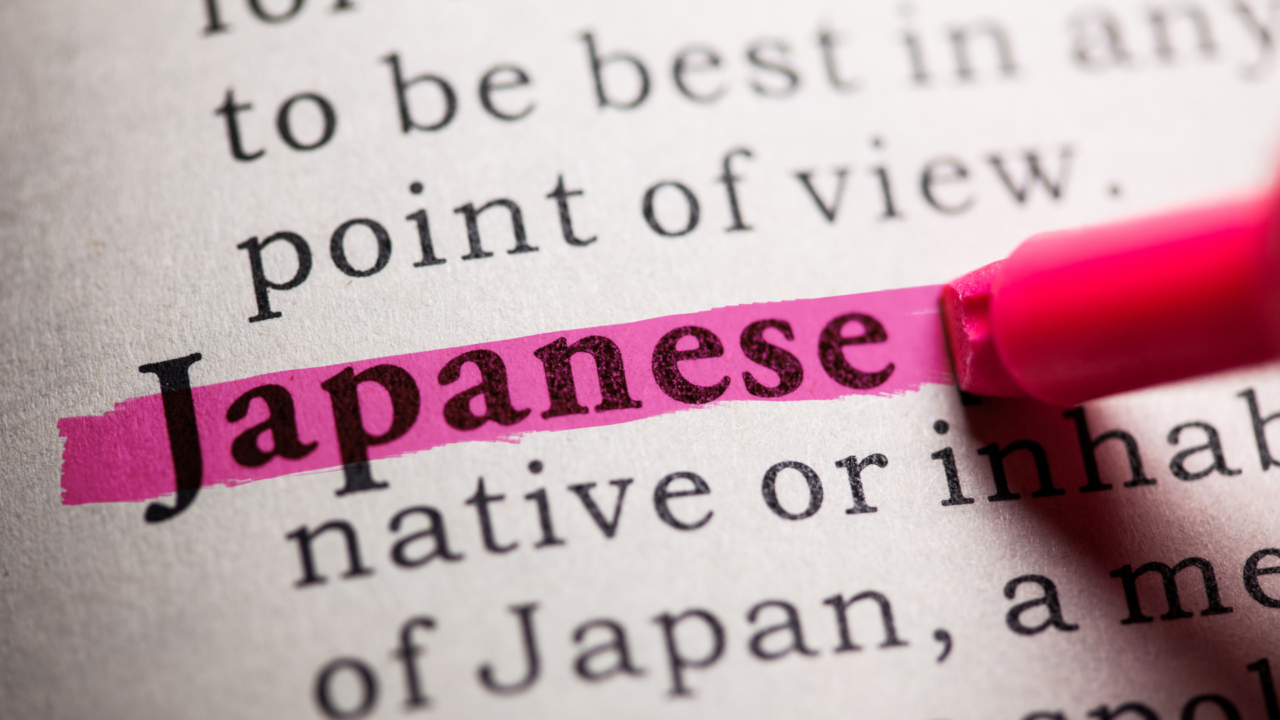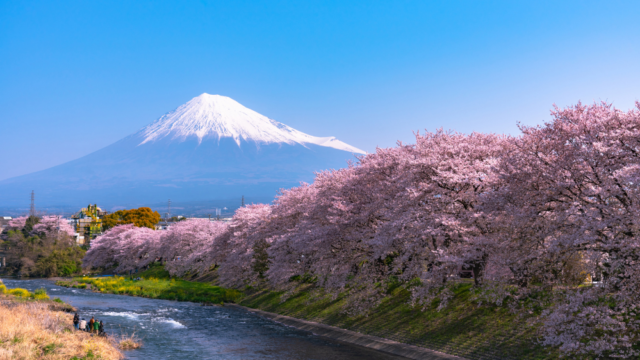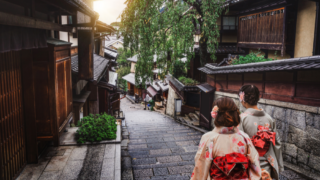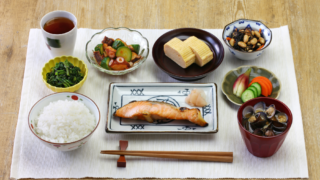
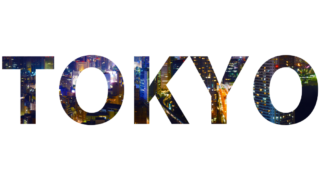
If you’re going to visit Japan, you might want to remember a few useful Japanese phrases. Not many Japanese people speak English, and even though Japanese people are known to be shy, they’ll likely warm up to you if you speak to them in Japanese.
Here, we introduce phrases that foreign visitors frequently use while traveling in Japan, organized by situation. Let’s check their meanings and usage with examples.
- Basic Phrases for Conversations
- Useful Phrases When Lost
- Additional Useful Phrases
- Useful Phrases for Hotels and Ryokan
- Smooth Ordering! Phrases for Use in Restaurants
- Now You Can Travel with Confidence! Helpful Phrases for Stations and Trains
- Get Insider Tips! Useful Phrases for Sightseeing
- Useful Phrases for Shopping
Basic Phrases for Conversations
These are essential phrases for communicating with Japanese people.
- 1-3. Greetings: “Ohayou gozaimasu”, “Konnichiwa”, “Konbanwa” In Japan, greetings change depending on the time of day. In the morning, say “Ohayou gozaimasu” (Good morning), during the day, say “Konnichiwa” (Good afternoon), and in the evening, say “Konbanwa” (Good evening).
- Saying Thank You: “Arigatou gozaimasu” This phrase expresses gratitude or appreciation. While “Arigatou” (Thank you) is also fine, “Arigatou gozaimasu” is a more polite way to say it. When someone says “Arigatou” to you, respond with “Dou itashimashite” (You’re welcome).
- 5-6. Responding: “Hai” and “Iie” Use “Hai” (Yes) to affirm in a conversation. When you need to negate, say “Iie” (No).
- 7. Apologizing or Getting Attention: “Sumimasen” This phrase is used not only for apologizing or expressing gratitude but also for getting someone’s attention. It’s similar to “Excuse me.” in English.
Useful Phrases When Lost
Here are some helpful phrases for when you get lost.
Even if you can just say the initial phrase in Japanese, it will make it easier for the Japanese person you approach to respond.
- 8.”Otasune shitemo ii desu ka?” (May I ask you a question?) When you want to ask for directions, you can start by saying this. Even just “Sumimasen” (Excuse me) is okay. If they can help, they will stop and say something like “Hai, ii desu yo” (Yes, sure). If they say “Gomen nasai” (Sorry) or “Sumimasen” (Excuse me), look for someone else to ask.
- 9.”○○ wa doko ni arimasu ka?” (Where is ___?) This is how you ask for the location of your destination. Replace ○○ with the name of the place you are looking for.
- 10.”Chizu o kaite moraemasu ka?” (Can you draw a map for me?) If you can’t understand the directions in Japanese, you might want them to draw you a simple map. “Chizu” means map. When you want someone to write something down, hand them paper and a pen and say “Kaite moraemasu ka?” (Can you write it down for me?).
- 11.”Koko wa doko desu ka?” (Where am I?) If you’re lost, you can ask someone where you are. “Koko” means here. Show them a map and use this phrase to find out your current location.
Additional Useful Phrases
- 12.”Nihongo wa hanasemasen” (I can’t speak Japanese) Use this phrase to let someone know you can’t speak Japanese. It’s also good to ask, “Eigo o hanasemasu ka?” (Can you speak English?) to see if they can communicate in English. “Eigo” means English. You can replace “Eigo” with the name of your own language.
- 13.”Mou ichido onegai shimasu” (Please say that again) If you didn’t catch what someone said, ask them to repeat it. Knowing the phrase “Dou iu imi desu ka?” (What does that mean?) can also be useful to confirm the meaning of words.
Useful Phrases for Hotels and Ryokan
While many accommodations have staff who speak English, there are still places where foreign language support is limited or where multilingual staff might not be available. Knowing a few essential Japanese phrases can expand your accommodation options and provide peace of mind in case of any issues.
- 14.”Chekkuin (chekkuauto) o onegai shimasu” (Please check me in/out) When checking in or out, simply say this phrase at the front desk.
- 15.”Aiteiru heya wa arimasu ka?” (Do you have any available rooms?) If you don’t have a reservation, use this phrase to ask if there are any available rooms. If there are no available rooms, the term is “manshitsu” (fully booked).
- 16.”Kore wa nan no ryoukin desu ka?” (What is this charge for?) Some accommodations may have unique fee systems. Use this phrase to ask about any unclear charges.
- 17.”Daiyokujou wa doko desu ka?” (Where is the large communal bath?) Many Japanese accommodations have large communal baths called “daiyokujou.” Some even have “rotenburo” (outdoor baths). Use this phrase to ask for their location.
- 18.”Chizu wa arimasu ka?” (Do you have a map?) After checking in, ask for a map to explore the area. You can use “○○ wa arimasu ka?” to ask for anything you might need.
- 19.”Chikaku ni osusume no resutoran wa arimasu ka?” (Are there any recommended restaurants nearby?) If you’re unsure where to eat, ask for recommendations with this phrase. Knowing “chikaku ni ○○ wa arimasu ka?” (Is there a ○○ nearby?) allows you to ask about various spots in the area.
- 20.“Eigo no tsuaa o shoukai shite kudasai” (Please recommend an English tour) Some places offer various tours for foreign visitors. Use this phrase when looking for an English-speaking tour guide.
- 21.”Heya ni kagi o wasuremashita” (I forgot my key in the room) If you forget your key in the room, use this phrase at the front desk to get help. The phrase “○○ o wasuremashita” (I forgot ○○) can be used to convey what you have forgotten.
Smooth Ordering! Phrases for Use in Restaurants
Knowing how to order in Japanese can make your dining experience in Japan even more enjoyable. Many casual restaurants may not have English-speaking staff, so try using the following phrases.
- 22″Menyuu o kudasai” (Please give me a menu) Use this phrase when you want to ask for a menu. When you enter a restaurant and take a seat, start by asking for the menu with this phrase. You can also replace “menu” with anything else you want by saying “○○ o kudasai” (Please give me ___). For example, if you want a drink, you can say “Biiru o kudasai” (Please give me a beer) or “Omizu o kudasai” (Please give me water). To check if there is an English menu available, ask “Eigo no menyuu wa arimasu ka?” (Do you have an English menu?). Many tourist areas have English menus, but local restaurants may not.
- 23“Chuumon o onegai shimasu” (I’d like to order, please) Once you’ve decided what to order, use this phrase to call for the waiter and place your order. Even if the staff seems busy, using this phrase can help make the ordering process smoother. When ordering, you can also say “Kore o kudasai” (I would like this) or “Kore ni shimasu” (I’ll have this) while pointing to the item, making it clear and easy for the staff to understand.
- 24″Osusume no menyuu wa dore desu ka?” (What is your recommended menu item?) If you’re unsure what to choose, ask for the recommended menu item with this phrase. Especially if it’s your first time at the restaurant or you’re unfamiliar with the cuisine, asking for recommendations can help you enjoy the best dishes the restaurant has to offer. The staff might suggest local specialties or seasonal dishes.
- 25“Kore wa nan desu ka?” (What is this?) This phrase is useful if you have dietary restrictions and need to know what a certain dish is made of. When you see an unfamiliar dish on the menu or have specific allergies, use this phrase to ask the staff. Point to the item you want to know about and ask, “Kore wa nan desu ka?” (What is this?), and the staff will explain it to you.
- 26″Kore o onegai shimasu” (I would like this, please) Point to the item you want on the menu and use this phrase to order it easily. In Japanese restaurants, pointing to the menu item while ordering is a common practice, so don’t hesitate to use this method. Pointing specifically to what you want helps avoid misunderstandings, even if there’s a language barrier
- 27″Koohii wa tsukimasu ka?” (Does this come with coffee?) Sometimes set menus include coffee. Use this phrase to confirm if coffee is included. Particularly with lunch or dinner sets, coffee or dessert is often part of the deal. Confirming this in advance helps you decide if you need to order additional items.
- 28″Mizu o onegai shimasu” (Water, please) In Japanese restaurants, it is common to be served free water. If you need a refill, use this phrase. Also, note that most of the time the water served is cold, so if you prefer hot tea, you can ask for it by saying “Ocha o onegai shimasu” (Tea, please)28
- 29″Toire wa doko desu ka?” (Where is the restroom?) This phrase is useful for asking the location of the restroom. It’s handy to know this for situations outside of restaurants as well. Especially in tourist spots or large shopping malls, you might often need to ask for the restroom. Politely say, “Sumimasen, toire wa doko desu ka?” (Excuse me, where is the restroom?), and people will kindly show you the way.
- 30-31″Itadakimasu” and “Gochisousama deshita” In Japan, it’s customary to say “Itadakimasu” before eating and “Gochisousama deshita” after finishing your meal. These phrases express gratitude to those who prepared the meal, so be sure to use them. Saying “Itadakimasu” before you enjoy your meal shows appreciation for the food. When leaving the restaurant, saying “Gochisousama deshita” to the staff gives a very polite and respectful impression.
- 32″Okaikei o onegai shimasu” (Check, please) Use this phrase when you’re ready to pay after finishing your meal. In some restaurants, just saying “Gochisousama deshita” (Thank you for the meal) can signal to the staff that you’re ready for the check. Before going to the register, use this phrase to call the staff to your table for a smooth checkout. In Japan, there are places where you pay at the table and others where you pay at the register, so adjust accordingly.
Now You Can Travel with Confidence! Helpful Phrases for Stations and Trains
Traveling by train in Japan is convenient, but the routes and transfers can be complex depending on the location. Knowing these phrases will help ensure a smooth journey.
- 33″Where is the ticket counter?” (Kippu uriba wa doko desu ka?) Use this phrase when you need to find the place to buy tickets. Many stations have automated ticket machines, but you can also purchase tickets at manned counters. Asking with this phrase will help station staff or people around you guide you to the ticket counter.
- 34″A ticket to ○○, please.” (○○ made no kippu o kudasai) When buying a ticket at a counter, say this phrase with your destination inserted in place of ○○. For example, “Tokyo made no kippu o kudasai” means “A ticket to Tokyo, please.” This phrase is particularly useful if it’s your first time buying a ticket and you’re unsure how to use the automated machines.
- 35“How do I get to ○○?” (○○ ni wa dou ikeba ii desu ka?) If the train routes are complex and you’re unsure about transfers, use this phrase with the name of your destination. For example, “Shibuya ni wa dou ikeba ii desu ka?” means “How do I get to Shibuya?” This will prompt the person to explain the best route and transfer points.
- 36″Which train goes to ○○?” (○○ yuki no densha wa dore desu ka?) Use this phrase to ask which platform or train to take to reach your destination. Insert the name of the station in place of ○○. For example, “Shinjuku yuki no densha wa dore desu ka?” means “Which train goes to Shinjuku?” This will help you find the correct train.
- 37″Does this train go to ○○?” (Kono densha wa ○○ ni ikimasu ka?) Use this phrase to confirm whether the train you are about to board or are currently on goes to your destination. Insert the name of the station in place of ○○. For example, “Kono densha wa Osaka ni ikimasu ka?” means “Does this train go to Osaka?” This helps ensure you’re on the right train.
- 38″What time is the next train to ○○?” (Tsugi no ○○ yuki wa nanji desu ka?) Use this phrase to ask when the next train to your destination departs. For example, “Tsugi no Kyoto yuki wa nanji desu ka?” means “What time is the next train to Kyoto?” This helps you know the departure time of the next train.
- 39″What station is this?” (Koko wa nan eki desu ka?) If you don’t know the name of the station where the train has stopped, use this phrase to ask other passengers. To find out the name of the next station, ask “Tsugi wa nan eki desu ka?” which means “What is the next station?” This helps you keep track of where you are and where you are going.
- 40″I’m getting off.” (Orimasu) When your stop is approaching and the train is crowded, use this phrase to let people know you need to get through. Saying “Orimasu” as you approach your stop will indicate to those around you that you need to get off the train, making it easier to exit.
Get Insider Tips! Useful Phrases for Sightseeing
Knowing these phrases can help you gather valuable information and make the most of your sightseeing experience in Japan. Speaking in Japanese might allow you to catch insider tips that you can only get locally.
- 41″Where is the tourist information center?” (Kankou annaijo wa doko desu ka?) This phrase is used to ask for the location of the tourist information center. Tourist information centers (“観光案内所”) provide a wealth of information that can be very useful for sightseeing, including maps, brochures, and local tips. Finding the nearest tourist information center can be a great starting point for your exploration. These centers often have staff who can speak multiple languages and provide personalized recommendations based on your interests and needs.
- 42″Do you have any brochures?” (Panfuretto wa arimasu ka?) Use this phrase when you want a brochure that contains detailed information about tourist spots. Brochures (“パンフレット”) often include maps, historical facts, and points of interest that can enhance your visit. Asking for brochures at tourist spots or hotels can provide you with valuable insights. Sometimes these brochures also include discount coupons for attractions and dining, making them a great resource for budget-conscious travelers. Additionally, brochures can serve as a helpful keepsake to remember your trip.
- 43″Is it okay to take pictures?” (Shashin o totte mo ii desu ka?) This phrase is useful for confirming if it’s okay to take photos in a certain area or of certain subjects, such as people in traditional clothing. It’s always polite to ask for permission before taking photos, especially in places with cultural or historical significance. Respecting local customs and rules regarding photography will help you have a more positive interaction with the locals. If you want to take a picture of someone in a beautiful kimono or traditional attire, asking politely can lead to a friendly conversation and possibly even more photo opportunities.
- 44″Can you take a picture of me?” (Shashin o totte moraemasu ka?) Use this phrase when you want someone to take a photo of you. It’s helpful in ensuring you get a nice picture at a scenic spot. After they take your photo, don’t forget to say “Arigatou” (Thank you) to show your appreciation. This polite gesture can often lead to friendly interactions and even some insider tips about the area from the person who helped you. Offering to take their picture in return can also be a great way to make new friends during your travels.
- 45″Where is the taxi stand?” (Takushii noriba wa doko desu ka?) This phrase is used to ask where you can find a taxi stand. If you prefer to take a bus, you can ask, “Basu noriba wa doko desu ka?” (Where is the bus stop?). Knowing where to find transportation options can make your travel around the city more convenient. Taxi stands are typically located near major train stations, hotels, and tourist attractions, but asking can save you time and effort. Understanding the location of nearby transport options ensures you can navigate the city efficiently and with less stress.
- 46″Please go here.” (Koko ni itte kudasai) When you want to tell a taxi driver your destination, you can simply point on a map and say “Koko” (here). Alternatively, you can specify the place by saying “○○ ni itte kudasai” (Please go to ○○). For example, “Tokyo Station ni itte kudasai” means “Please go to Tokyo Station”. This is especially useful if you’re unsure of the pronunciation or if the location is difficult to communicate. Showing the driver an address or a map on your phone can also help ensure you reach your destination smoothly. It’s a straightforward way to communicate your destination and ensure you arrive without any confusion.
